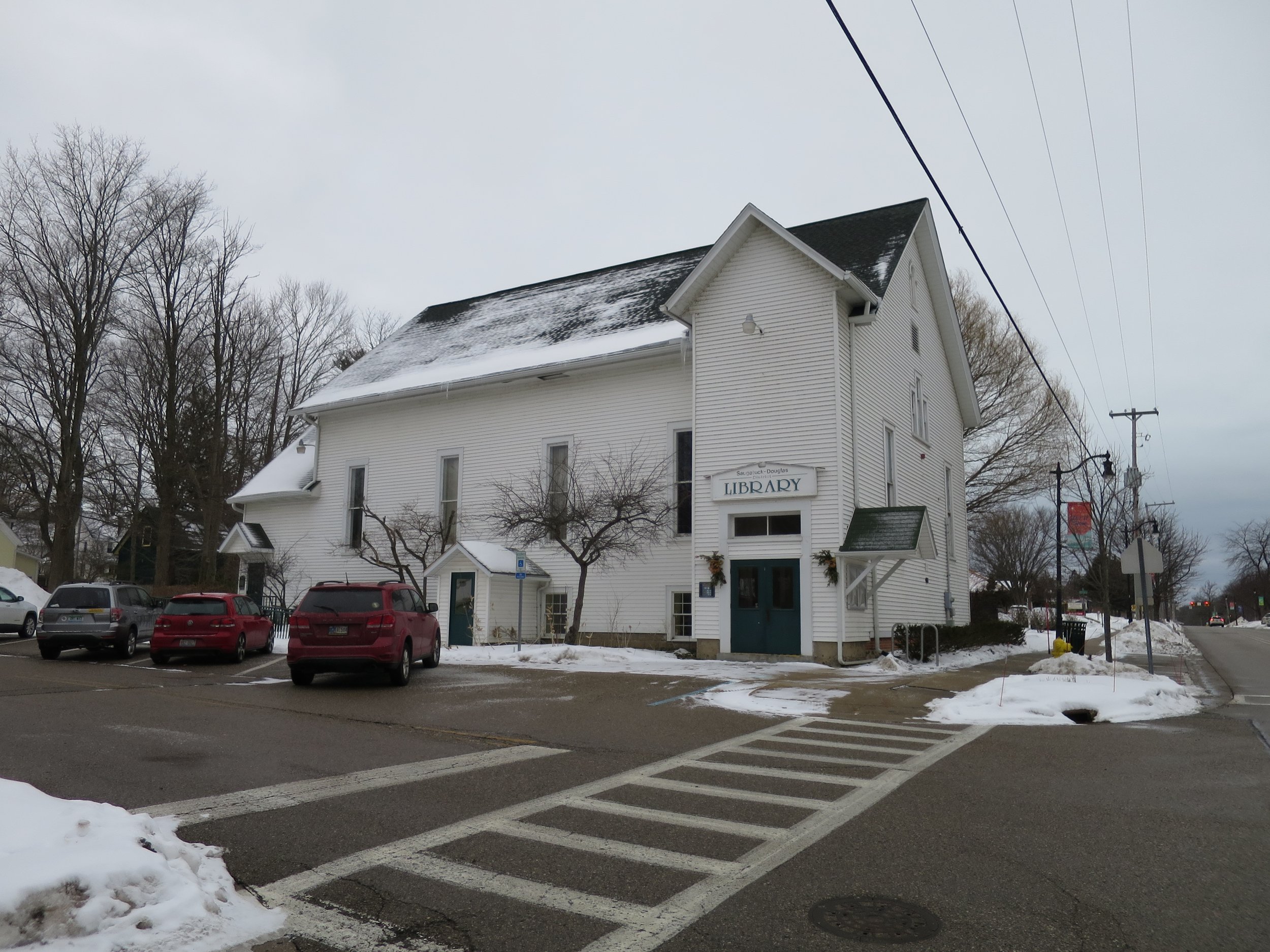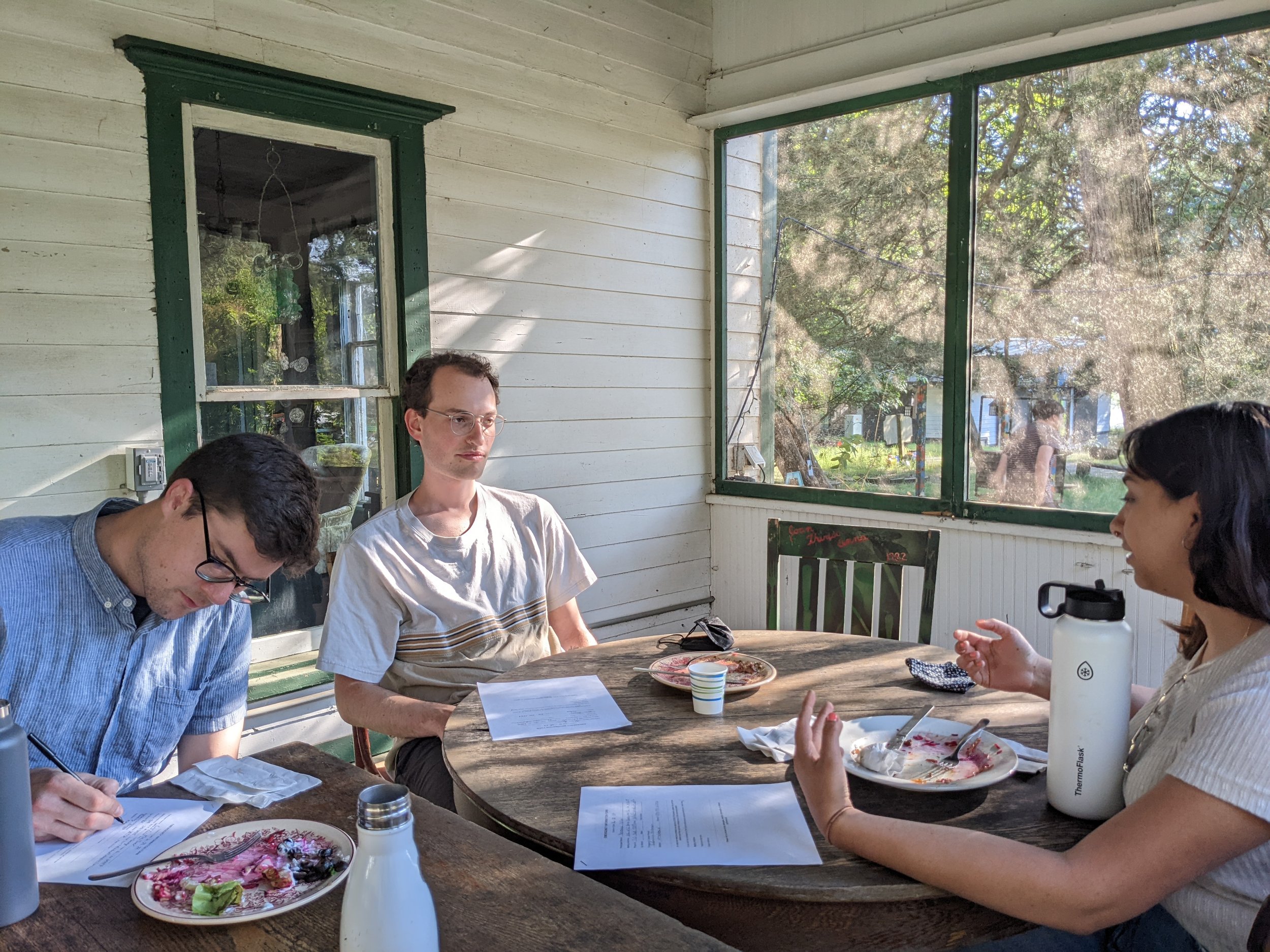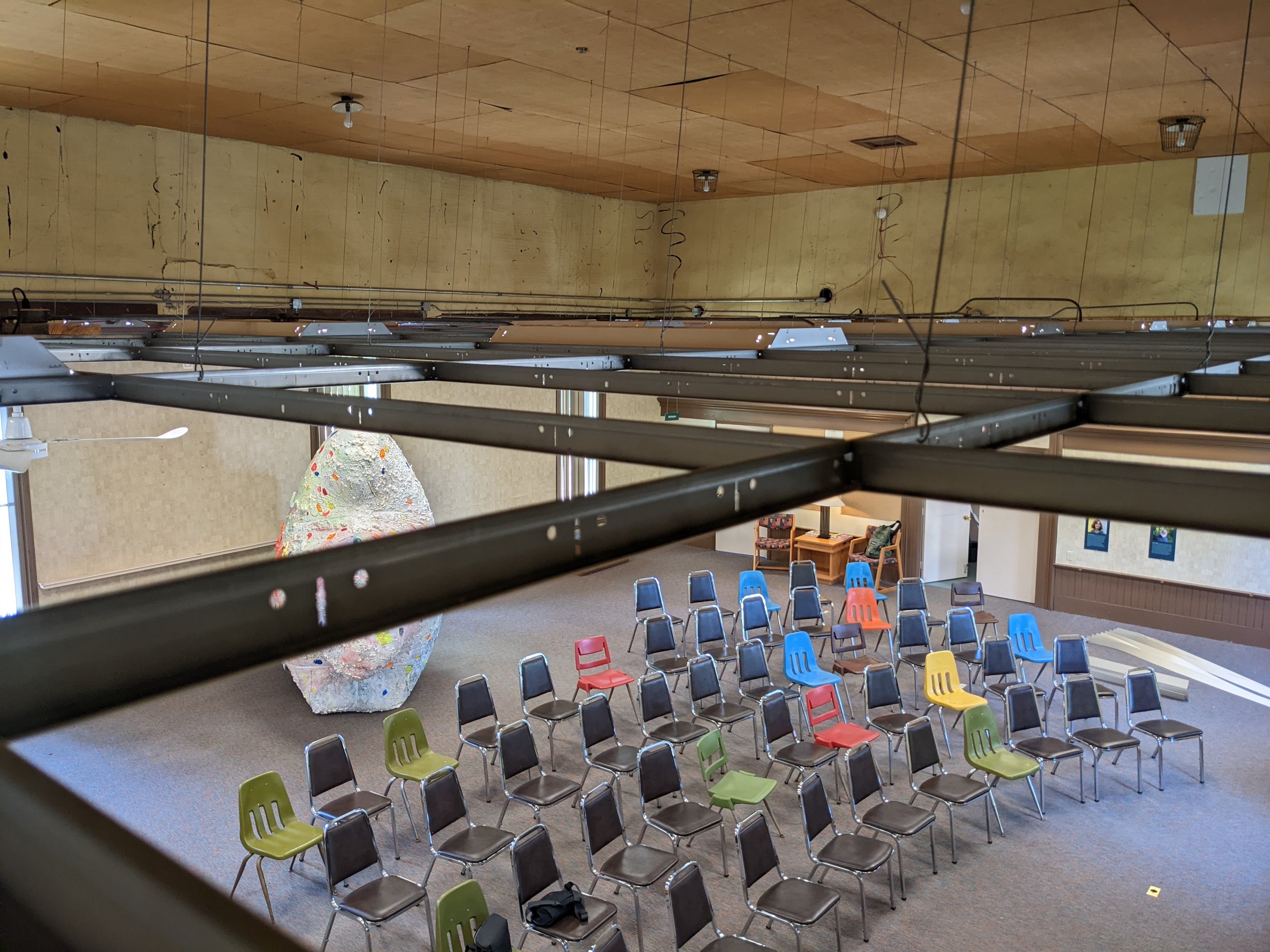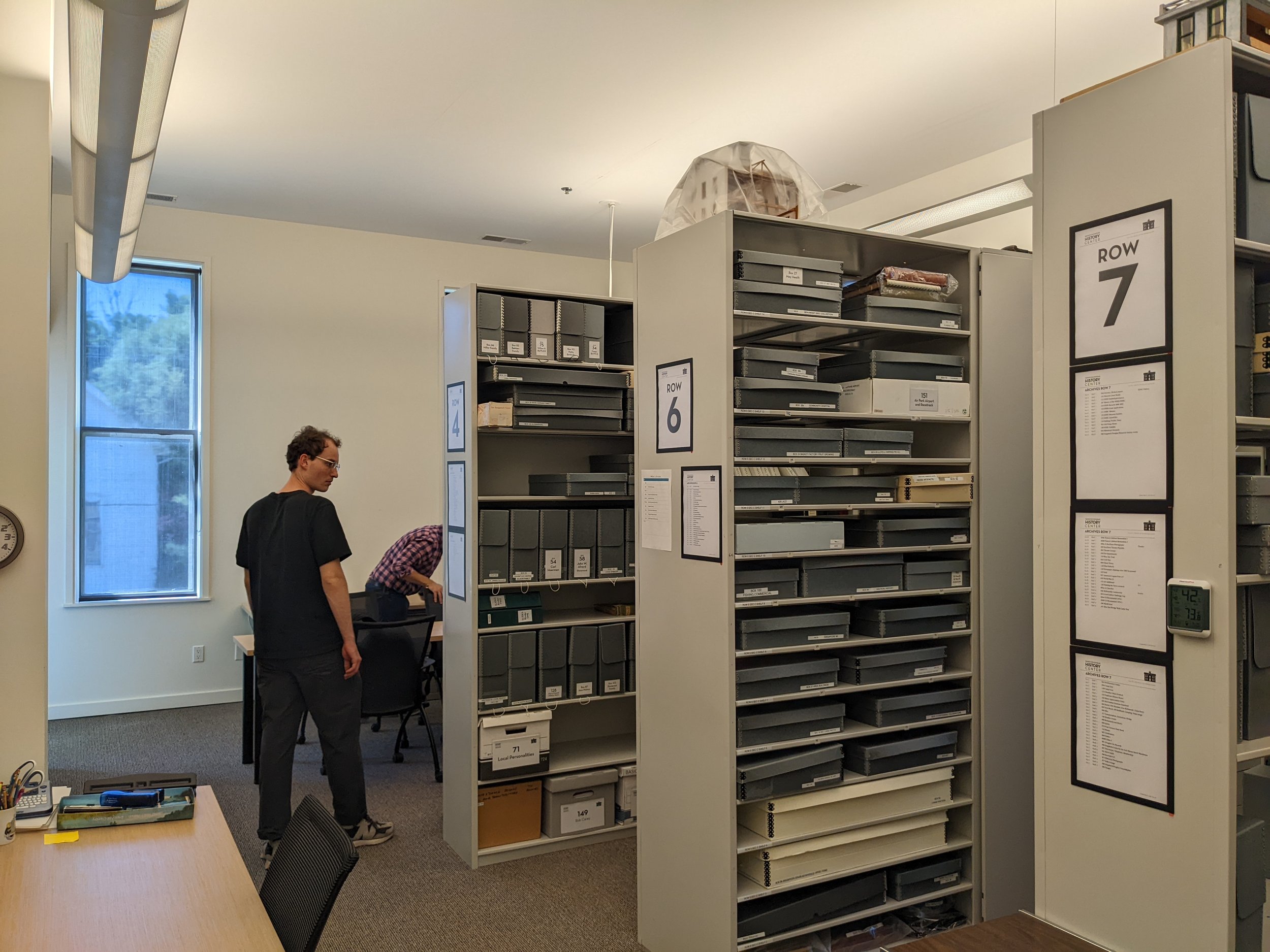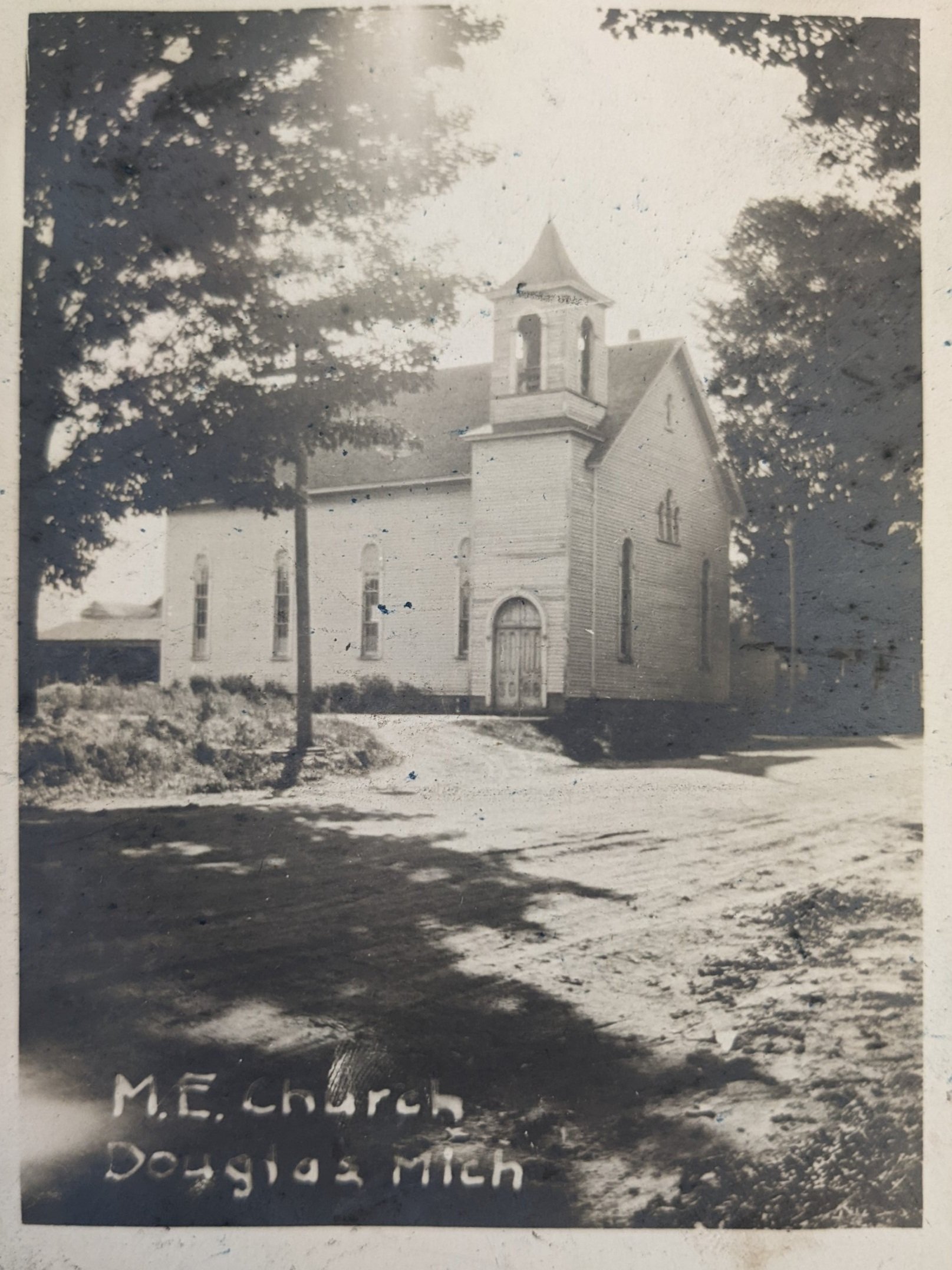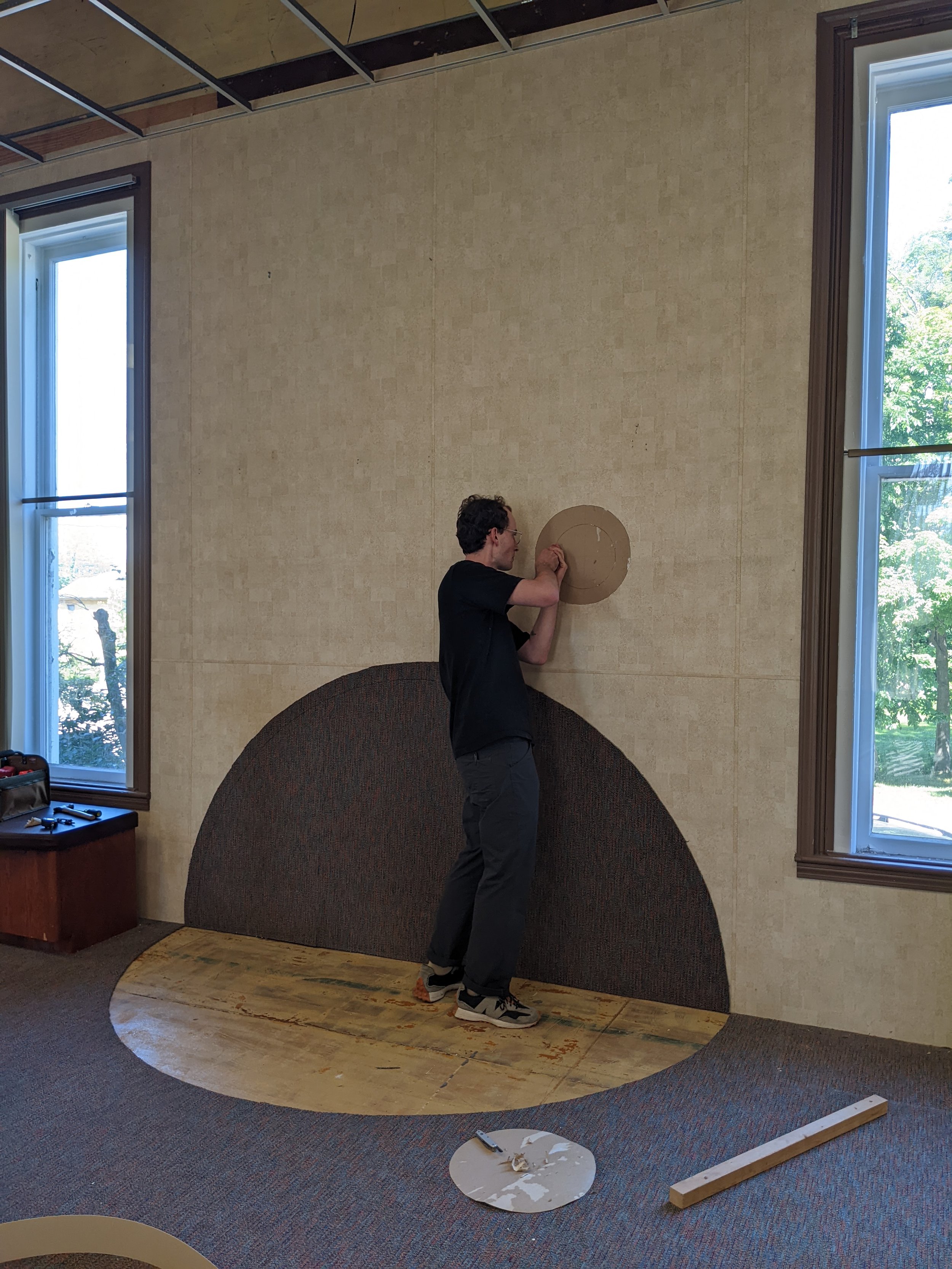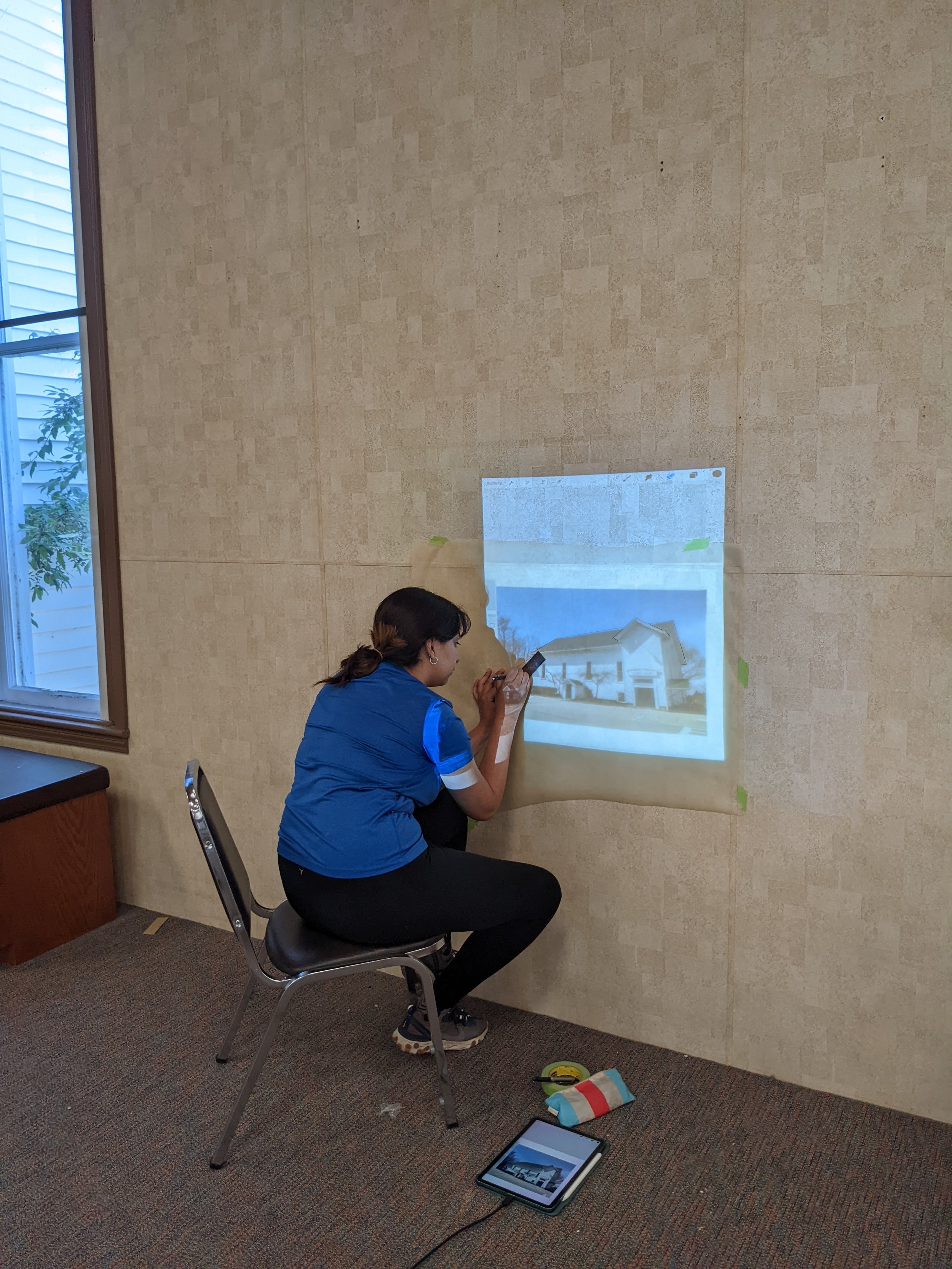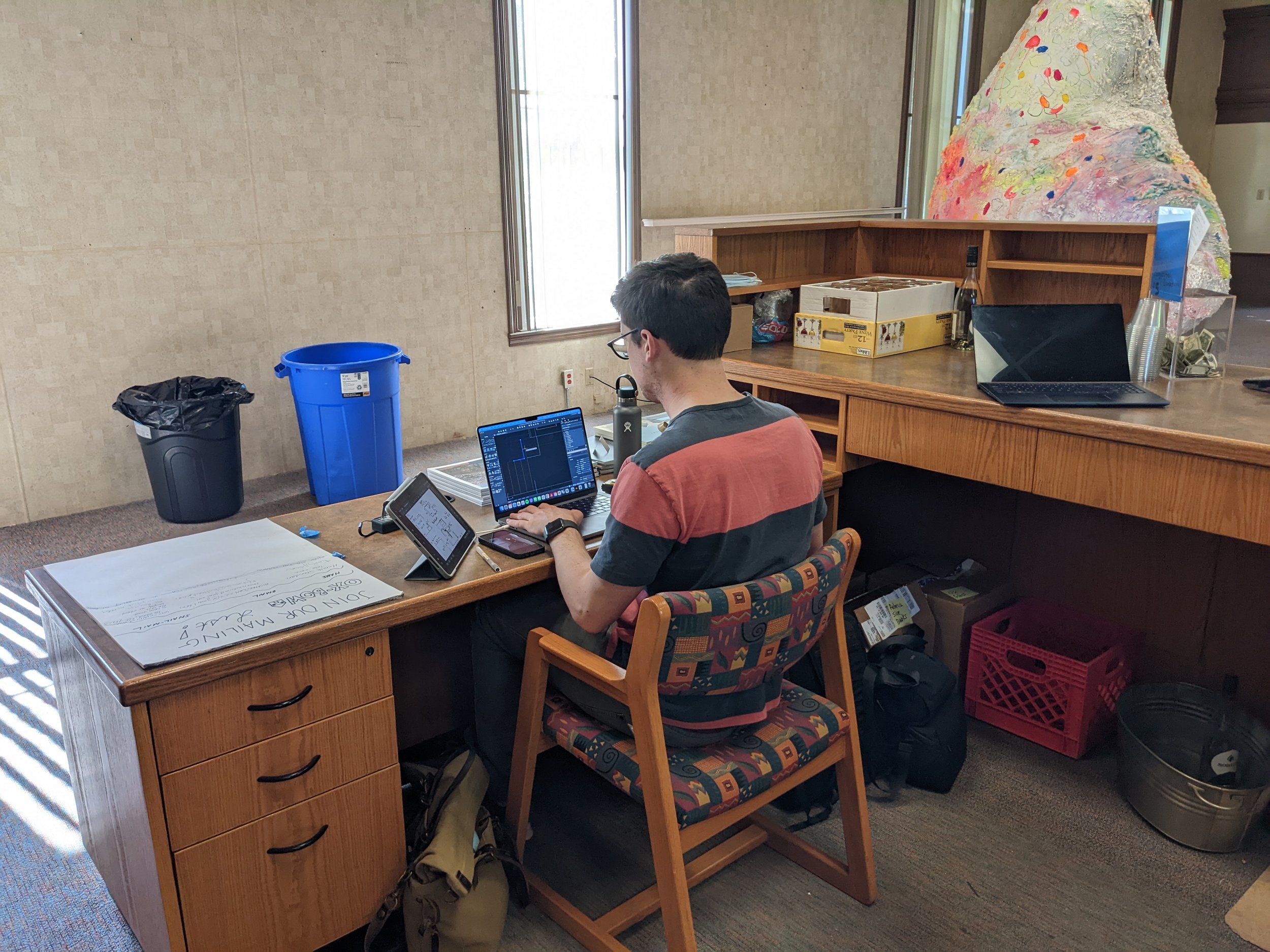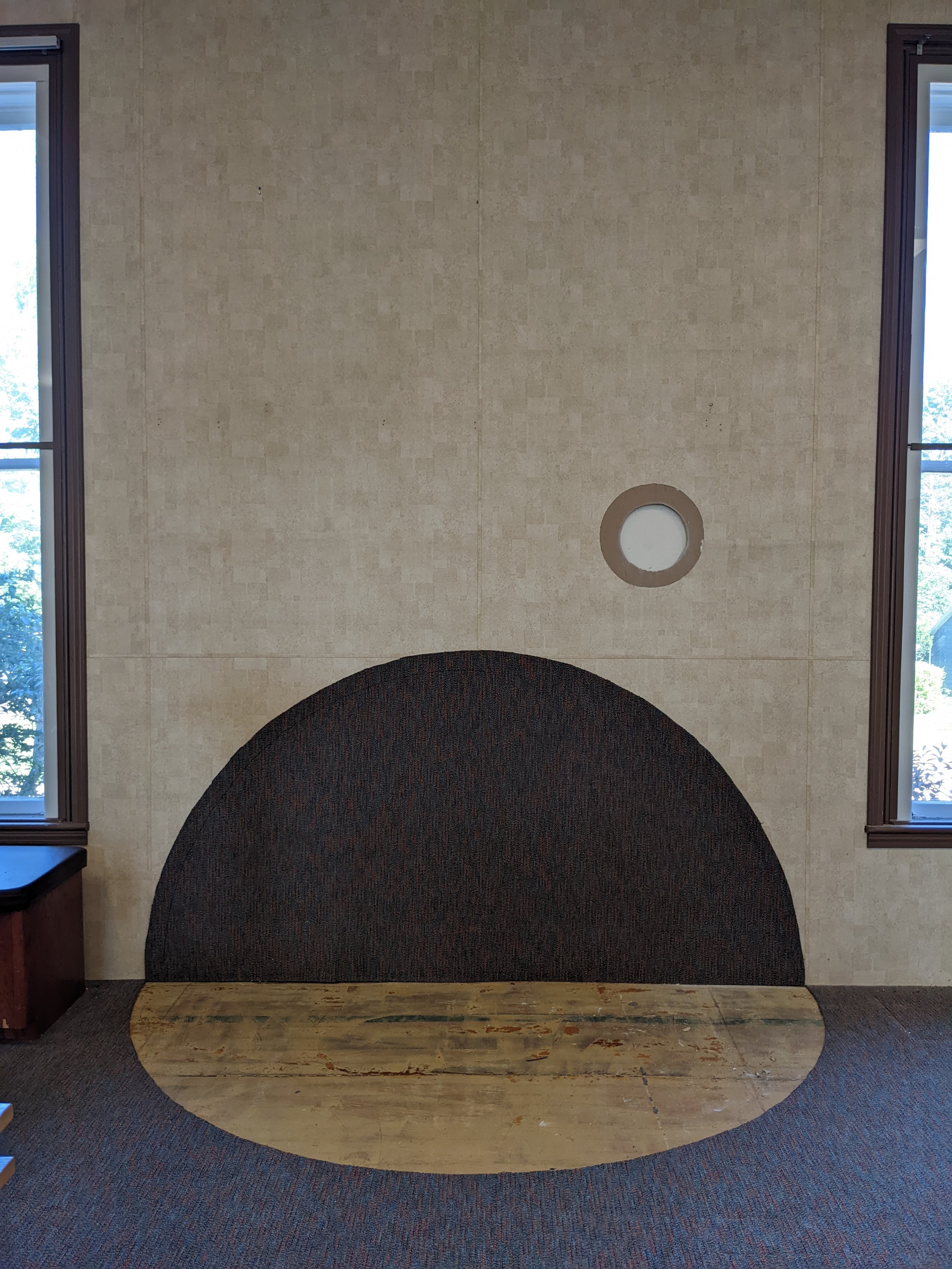The site of Ox Bow House, formerly the Douglas Library in downtown Douglas Michigan
Ox Bow Architect In Residence
Starting this summer, I'll be architect-in-residence at Ox Bow School of Arts and Artist Residency in Saugatuck Michigan. The role is primarily to aide in the transformation of the former Douglas Library into Ox Bow House. For the next roughly 2.5 years, we'll be conducting research, planning talks, symposiums, exhibitions, publications, and planning the renovation for a 150 year old building that has seen a number of different uses over the course of its history that have made the building a vital part of the Douglas/Saugatuck area.
The building will be in use during the residency time, and part of the idea is to elucidate both the story of the building and the process of transformation that occurs during the renovation process. We'll be picking and pulling at the various physical layers of the building to help tease out its history, which we've already started to reconstruct with research at the Douglas Saugatuk History Society located across the street. We've set up a temporary studio space there where the public will be able to observe and engage in the design process in both passive and active ways.
Adaptive Operations turns 3!
image & caption from Melinda Zitnick’s obituary for Mecca Flats
Violence Against Buildings
This past spring semester, I had the privilege of co-teaching and developing, with Carla Bruni, a new historic preservation class at The School of the Art Institute of Chicago (SAIC). The class was called Violence Against Buildings, and the premise was that the destruction of buildings and the built environment is another form of (often state sanctioned and/or directed) violence and terror against marginalized communities. We proposed that this violence existed on a non-linear spectrum, from capitalist-fueled “creative destruction” (ie. we need to tear this down to build something better in its place) to racially-fueled “traumatic destruction” (wherein pieces of the built environment are destroyed supposedly as a means of mitigating risk or liability. These spaces of destruction live on as a wound and eventually a scar on the neighborhood and broader community.
We also wanted to talk about and explore the idea of cultural rather than architectural preservation. We compiled a list of destroyed or threatened spaces/places that were culturally significant for a wide range of reasons in and around Chicago for the students to research, eulogize, and design a memorial for.
We had lots of amazing guests: Dr. Franklin Cosey-Gay talked about Chicago’s particular history of racism & segregation and the 1919 Chicago Race Riot memorial project
slide from Dr. Franklin Cosey-Gay’s lecture
Ward Miller and Mary Lu Seidel of Preservation Chicago talked about preservation efforts in the Roseland and Bronzeville community areas, Santiago X discussed his work addressing the erasure and exploitation of indigenous people and their places/identities, and Paola Aguirre Serrano presented on the racialized closure of Chicago Public Schools and the reactivation of Overton Elementary
Slide from Paola Aguirre Serrano’s lecture
Meegan Czop of Great Lakes Yard told us about the embedded material and cultural value of the things that went into creating our stock of older buildings
Meegan Czop explains the history of lumber stamps via a remote tour and presentation
And Mejay Gula talked about the preservation and adaptive reuse of Chicago’s bridgehouses with her Tender House Project.
slide from Mejay Gula’s lecture about the Tender House Project
Of all the student projects, the eulogy and memorial (by Melinda Zitnick) for Mecca Flats hit home the hardest for me. After essentially living in Crown Hall for 5 years, I was intimately familiar with its stature among architects as the acme of 20th century Modernism, but almost completely oblivious to what it represented to Bronzeville’s historically Black community. That same community organized to try and save Mecca Flats for 11 years, while IIT as its owner did everything in its power to devalue and undermine the building in order to justify its destruction - a cruel and inhumane tactic still used by developers to this day.
I think that architects and the architecture profession have long seen themselves as outside of discussions around why our cities are so segregated, why resources are so unevenly allocated, and why some places thrive while others struggle. Architects are taught the tools and skills but not the agency to make changes in the built environment. That’s what the paying client is for. While this doesn't have to be true, it is historically how most practices have been structured. Every time you see a building torn down by a developer, it is very likely because an architect told that developer that it was not worth saving, and that tearing it down and building a new building would be better/easier/cheaper. What architects don’t say is that they often can get a bigger fee by advocating for this destruction. Architects are complicit partners in this form of violence.
The first person I met in Chicago after my first day of freshman orientation was Reginald Robertson. I was at a reception in the basement of the former student union, spitting distance from the site of the former Mecca Flats. I didn’t know anyone, was scared and shy, and wanted to leave. Then I heard what I thought were the strains of a Jelly Roll Morton song coming from a nearby room. I saw that there was an actual human playing a real piano, casually, in a room with a few other random folks mingling around in it. I went in and intently listened. He didn’t have any sheet music, just a piece of paper filled with names of songs he knew. When Robertson finished, he saw that I was a new fan and struck up a conversation. He found out I knew a fair amount about jazz (for an 18 year old white boy from small town Wisconsin), and had recently gotten really into ragtime. He even convinced me to sit down and play some original, simple “rags” I had written in high school, which he then blew my mind by improvising entire songs around. Amazed, I wondered what he was doing playing in the basement of a student center at a small engineering school, if maybe he taught at the nearby college of music or something. He said he had a relative who worked at IIT and the school let him practice on the grand piano there. This was a somewhat distant memory, until the next time I heard his name, about 5 years later on the radio when they were talking about local MacArthur "genius grant” winners.
Part of Robertson’s practice is researching and excavating lost musical works in an attempt to bring them back to life, an attempt to maybe tell a more complete history that has been buried for any number of reasons. At some point during my time at IIT and Crown Hall, the school re-designed the north lawn of the building, lowering the field to give it a little more interest and usability than the basic piece of grass it was for the first 50 years after the demolition of the Mecca Flats on the site. The excavation of the lawn turned up all sorts of building debris, which I found very strange and exciting. Still pretty oblivious to what this debris actually was and represented, my roommates and I grabbed some pieces of muddy terra cotta out of a dumpster and took them home for a bath and a new life as artifacts.
terra cotta artifact from the north lawn of Crown Hall
The history of Mecca Flats and Chicago’s Black Metropolis was still actively being exhumed and re-destroyed a mere 20 or so years ago, with any serious attempts to excavate and tell a more complete history a long way off. However, even this more complete history frequently justifies the actions of IIT by pointing out that Crown Hall, which is universally understood to be a "better" and more important building, was built in its place. Clearly, it was and is only better for some. While architects and preservationists are actively engaged in the debate around whether it is worth the destruction of some existing buildings that may stand in the way of a builder/developer/architect, it is beyond time that we consider the toll on human lives that this seemingly routine destruction and violence causes.
“Sit where the light corrupts your face.
Miës Van der Rohe retires from grace.
And the fair fables fall.”
- Gwendolyn Brooks, In the Mecca
Mecca and Crown Hall interiors - image from Tim Samuelson’s exhibit Mecca Flat Blues
Not So New Year - Media Roundup & Updates
2020 got off to a somewhat busier than expexted start, with a handful of quicker, smaller, exciting projects working their way into a schedule of slightly slower, bigger projects that were already in the works. Which is to say that there hasn't been much time to post any updates over here. Wherewithall and Superkhana International both got some nice year-end accolades, with Wherewithall being nominated as a finalist for Best Restaurant Design by Eater Chicago, and both restaurants landing on Eater Chicago's Five Most Beautiful Restaurants and Bars of 2019 list. For those keeping score, that means 100% of the restaurants that AO designed in 2019 made up 40% of that particular list.
Illinois Tech Magazine, the alumni publication of my alma mater - Illinois Institute of Technology - ran a nice feature that hightlighted these two projects as well.
Some other news would be that I started teaching part time this semester at the School of the Art Institute of Chicago, in the Historic Preservation department. With Carla Bruni, we're teaching a class called Violence Against Buildings, exploring the spectrum of reasons why we tear down valued pieces of our built environment, and the various forms of trauma this imparts on ambient communities. Students will be researching and memorializing lost or threatened historic spaces and places.
Dr. Franklin Cosey-Gay discusses the origin of the 1919 Race Riots and Chicago’s historic institutionalized racism/planned segregation
Finally, Adaptive Operations ceased squatting in a dozen different locations and moved into its new office/studio space, hidden away in a secret location in Bridgeport, which it shares with two of its favorite record labels.
AOHQ - bless this mess


